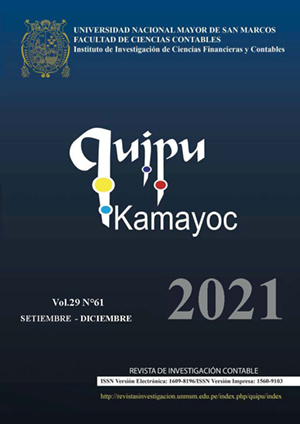Proposal of the cost system and its impact on the utility of laundry Industrial Wash S.A.C.
DOI:
https://doi.org/10.15381/quipu.v29i61.20969Keywords:
cost system, utility, proposal, sale price, service costAbstract
Objective: Determine the incidence of the cost system on the utility of the laundry Industrial Wash S.A.C., year 2018. Method: The research was qualitative. The sample was comprised of three workers from the accounting area and the owner. The techniques were the documentary analysis and the interview. Results: The costs were estimated based on the financial accounting data, obtaining an annual gross profit of S/ 14 308 307, an operating profit of S/ 13 422 474 and a net income of S/ 9 462 844. On the other hand, the estimate of costs under the work order cost system was S/ 14 524 658 per year, operating income of S/ 13 719 370 and net income of S/ 9 672 156. It was found that the difference of both methods was positive in favor of the cost system for work orders. According to the majority of those interviewed, the most appropriate costing method would be the work order costing system. Conclusion: Laundry Industrial Wash S.A.C. does not have a well-defined cost system that provides accurate information on the costs incurred in the laundry service, nor its profits; however, the data has allowed to evaluate a cost system for work orders with a positive result in profits.
Downloads
Downloads
Published
Issue
Section
License
Copyright (c) 2021 José Carlos Humberto Soto Mujica

This work is licensed under a Creative Commons Attribution 4.0 International License.
AUTHORS RETAIN THEIR RIGHTS:
a. Authors retain their trade mark rights and patent, and also on any process or procedure described in the article.
b. Authors retain their right to share, copy, distribute, perform and publicly communicate their article (eg, to place their article in an institutional repository or publish it in a book), with an acknowledgment of its initial publication in Quipukamayoc .
c. Authors retain theirs right to make a subsequent publication of their work, to use the article or any part thereof (eg a compilation of his papers, lecture notes, thesis, or a book), always indicating the source of publication (the originator of the work, journal, volume, number and date).






